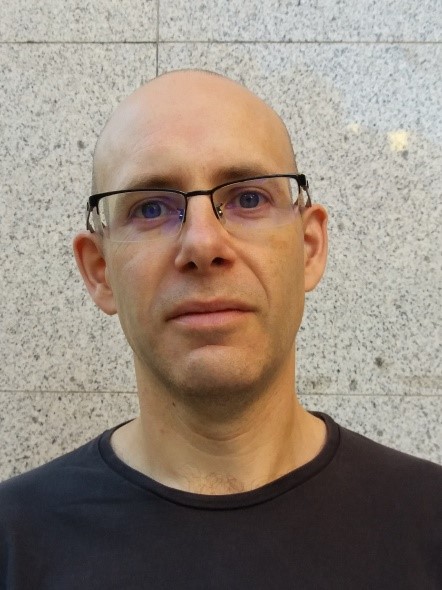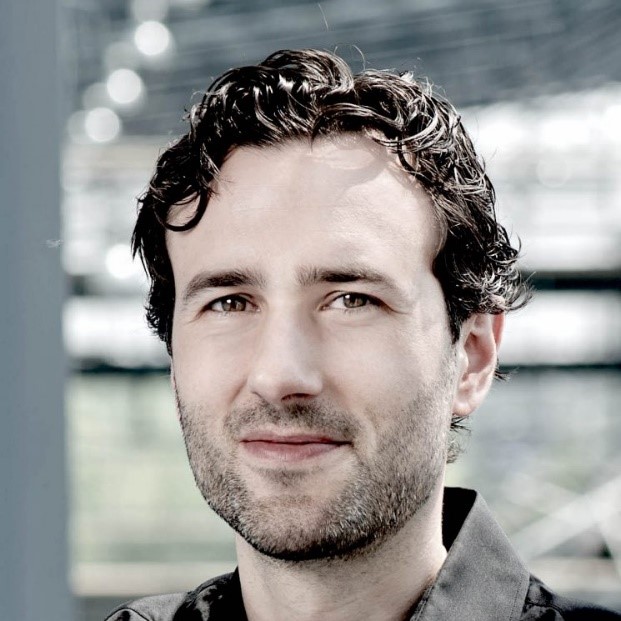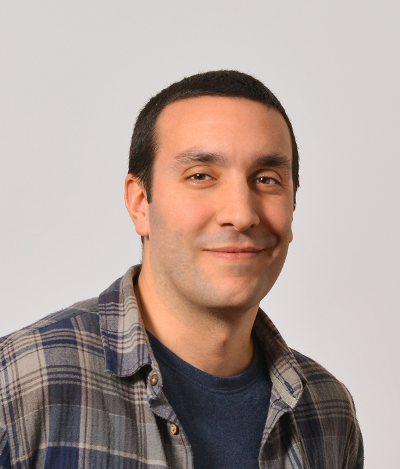Scientific Training II
Data-Driven Modeling of Mechanical Systems
Madrid, 8-11 April 2019
PhD course on data driven modelling of mechanical systems. Including parameter estimation from imaging as well as numerical optimization methods. Experts in the field will cover simulation and optimization basics, followed by multiple methodologies to incorporate data-specific knowledge into simulation methods: measurement-based parameter estimation, design of subspace and coarsened models, and learning-based data-driven simulation methods.
Course content
As part of personalized clinical design, it is essential to develop simulation tools that adapt to the particular properties and condition of each patient. This is possible through the acquisition of patient-specific data, and tuning of simulation models and parameters to match the observations in the data. Out of the many properties and phenomena that can be modeled in a data-driven manner, this course focuses on mechanical behavior. Even then, there are multiple ways in which data can be exploited in the design of personalized simulation models, and these course explores several of these ways.
One way is to set up a generic model, and estimate particular parameters that produce a personalized instance of the model. We refer to this methodology as measurement-based parameter estimation or parameter identification. The input data must include several observations of patient deformations, and the estimation of parameters is formulated as an optimization problem. Typically, this optimization must also fulfill mechanical constraints that ensure the biomechanical validity of the problem.
Another way to account for data is to devise a very accurate and high-resolution simulation model, and then leverage precomputation of simulation data to reach a more efficient simulation model. This second model can be used, perhaps interactively, in the context of design tasks. The course visits two types of approaches to precompute fast data-driven simulation models. One approach is the use of global subspace methods, and the other approach is the use of numerical coarsening methods. Both approaches try to find a complex but compact basis that represents well the richness of full simulations, and they differ in the properties of the basis and hence the precomputation method.
The last way to account for data is to follow modern machine learning approaches, which model complex input-output functions through many combinations of local linear and nonlinear operators. Deep learning techniques have demonstrated success at reproducing very complex phenomena through the discovery of meaningful latent spaces. The course will cover the basics of deep learning and its application to modern mechanical simulation problems.
Before addressing the major data-driven modeling techniques, the course will cover basics of the two main tools that will be used in combination: simulation principles and numerical optimization.
Learning objectives
- Understand the basics of simulation of mechanical systems, discretization and solvers.
- Understand the basics of numerical optimization, objective functions, constraints, and solvers.
- Develop measurement-based estimation procedures through constrained optimization.
- Develop subspace simulation models based on precomputed data.
- Develop machine learning models for mechanical simulation problems.
Program
Monday April 8
9:30 – 11:00 Presentation and introduction to simulation of mechanical systems
11:00 – 11:30 break
11:30 – 13:00 Development of an example mechanical simulation solver
13:00 – 14:00 lunch break
14:00 – 15:30 Introduction to numerical optimization
15:30 – 16:00 break
16:00 – 17:30 Test and refinement of optimization approaches
Tuesday April 9
9:30 – 11:00 Basics of model estimation through optimization
11:00 – 11:30 break
11:30 – 13:00 Implementation of basic parameter estimation algorithm
13:00 – 14:00 lunch break
14:00 – 15:30 Implementation of a refined parameter estimation algorithm
15:30 – 16:00 break
16:00 – 17:30 Tour of the Multimodal Simulation Lab
Wednesday April 10
9:30 – 11:00 Introduction to subspace simulation methods
11:00 – 11:30 break
11:30 – 13:00 Implementation of a subspace simulation solver
13:00 – 14:00 lunch break
14:00 – 15:30 Introduction to numerical coarsening methods
15:30 – 16:00 break
16:00 – 17:30 Invited talk: Nils Thuerey, TU Munich
Thursday April 11
9:30 – 11:00 Introduction to neural networks
11:00 – 11:30 break
11:30 – 13:00 Application of neural networks to simulation problems
13:00 – 14:00 lunch break
14:00 – 15:30 Advanced applications of deep learning in simulation
System and software prerequisites
All participants should use their own laptop, with the following installation:
- Operating system: Windows 10/8/7 (or another recent version).
- Software:
- Unity3D: Download the installer for Windows.
- Visual Studio Community 2017: Installed with Unity3D.
- Python 3 + Anaconda: During the installation of Visual Studio, modify the settings and select Python Tools.
Course material
All course material provided to participants on site.
Speakers
 Miguel A. Otaduy
Miguel A. Otaduy
Miguel Otaduy is an professor (profesor titular) at Universidad Rey Juan Carlos (URJC Madrid), where he works at the Modeling and Virtual Reality Group (GMRV), in the Department of Computer Science. He received his BS (2000) in Electrical Engineering from Mondragon Unibertsitatea (Spain), and his MS (2003) and PhD (2004) in Computer Science from the University of North Carolina at Chapel Hill.
Between 1995 and 2000, he was a research assistant at Ikerlan research lab, and between Aug 2000 and Dec 2004 he was a research assistant with the Gamma group at UNC. In the Summer of 2003 he worked at Immersion Medical. From Feb 2005 to Feb 2008, he worked as a research associate (oberassistent) at the Computer Graphics Laboratory of ETH Zurich, with Prof. Markus Gross. Miguel is at URJC Madrid since Feb 2008, where he leads the Multimodal Simulation Lab (MSLab). He has published 3 books and book chapters, and over 100 papers. He is a recipient of 8 patents, a 2011 ERC Starting Grant, and a 2017 ERC Consolidator Grant.
Miguel is associate editor of 3 international journals (IEEE Transactions on Visualization and Computer Graphics, IEEE Transactions on Haptics, and IEEE Robotics and Automation Letters). He was program co-chair of the 2014 ACM Symposium on Interactive 3D Graphics and Games (I3D), the 2013, 2015 and 2019 IEEE World Haptics Conference (WHC), the 2013 Eurographics short papers program, the 2010 ACM SIGGRAPH / Eurographics Symposium on Computer Animation (SCA), and the 2010 Spanish Computer Graphics Conference (CEIG); and conference co-chair of the 2013 I3D and the 2013 CEIG.
 Nils Thuerey
Nils Thuerey
Nils Thuerey is a Professor at TU Munich. He works in the field of computer graphics, with a particular emphasis on physics-based deep learning algorithm. One focus of his research targets the simulation of fluid phenomena, such as water and smoke. These simulations find applications as visual effects in computer generated worlds, but also in many fields of engineering. Examples of his work are novel algorithms to make simulations easier to control, to handle detailed surface tension effects, and to increase the amount of turbulent detail.
After studying computer science, Professor Thuerey acquired a PhD for his work on liquid simulations in 2006. He received both degrees from the University of Erlangen-Nuremberg. Until 2010 he held a position as a post- doctoral researcher at ETH Zurich, in collaboration with Ageia/Nvidia. Subsequently, he worked for three years as Research & Development Lead at ScanlineVFX, developing large scale physics-simulators for visual effects. Since fall 2013 he has been Professor for Physics-based Simulation at TUM.
Among other achievements, he is a recipient of a Technical Academy Award and an ERC Starting GrantNils Thuerey is a Professor at TU Munich. He works in the field of computer graphics, with a particular emphasis on physics-based deep learning algorithm. One focus of his research targets the simulation of fluid phenomena, such as water and smoke. These simulations find applications as visual effects in computer generated worlds, but also in many fields of engineering. Examples of his work are novel algorithms to make simulations easier to control, to handle detailed surface tension effects, and to increase the amount of turbulent detail.
After studying computer science, Professor Thuerey acquired a PhD for his work on liquid simulations in 2006. He received both degrees from the University of Erlangen-Nuremberg. Until 2010 he held a position as a post- doctoral researcher at ETH Zurich, in collaboration with Ageia/Nvidia. Subsequently, he worked for three years as Research & Development Lead at ScanlineVFX, developing large scale physics-simulators for visual effects. Since fall 2013 he has been Professor for Physics-based Simulation at TUM.
Among other achievements, he is a recipient of a Technical Academy Award and an ERC Starting Grant
 Jesús Pérez
Jesús Pérez
Jesús Pérez is a Postdoc Researcher at Universidad Rey Juan Carlos (URJC Madrid), where he works at the Multi-modal Simulation Lab, under the supervision of Miguel Otaduy. His current research focuses on physics-based animation and related application fields, mainly data-driven materials, computational design, and digital fabrication.
Jesus received his BS in Software Engineering (2010) from Universidad de Oviedo (Spain). Then, he obtained a MS on Artificial Intelligence (2012) from Universidad Politécnica de Madrid. During this period, he worked as a research assistant at the Computational Intelligence Group, as part of the Blue Brain Project. Later, he got a MS on Computer Graphics, Games and Virtual Reality (2013) from URJC Madrid, where he completed his PhD in Computational Design of Flexible Structures (2017), under the advisory of Prof. Miguel A. Otaduy. His thesis was partially funded by Disney Research Zurich, where he worked as a research assistant during during two secondments. From Dec. 2017 to Feb. 2019, he was a Postdoctoral Researcher at the Visual Computing Lab (IST Austria) under the supervision of Prof. Bernd Bickel. There, he was recipient of an IST Plus Fellowship (competitive grant funded by the H2020 Marie Skłodowska-Curie programme).
Jesús has participated in a number of EU funded projects, including ERC Starting Grants Animetrics (280135) and Materializable (715767), ERC Consolidator Grant Touch-Design (772738), and H2020 Training Network Rainbow (764644). He has 3 publications as a main author in the top journal ACM Transactions of Graphics, which add up 50 citations in Google Scholar.
 Dan Casas
Dan Casas
Dan Casa is Assistant Professor at the Universidad Rey Juan Carlos (URJC) and first-time participant to FET under Horizon 2020. Dan received his MS (2009) in Computer Engineering from Universitat Autònoma de Barcelona (Spain) and his PhD (2014) in Computer Graphics from the University of Surrey (UK), supervised by Prof. Adrian Hilton. He was postdoc in University of Southern California (CA, USA) in 2014–2015, and in the Max Planck Institute for Informatics (Germany) in 2015–2016. He received a Marie Skłodowska-Curie Individual Fellowship in 2016–2018, and joined the URJC faculty in October 2018. His research have received several awards including second Best Paper Award at ACM i3D 2012 and Best Demo Award at ACM i3D 2015. He is author of more than 25 international publications, including top journals International Journal on Computer Vision (IJCV, Impact Factor: 11.541), ACM Transactions on Graphics (ACM TOG, Impact Factor: 4.218), and IEEE Transactions on Visualization and Computer Graphics (IEEE TVCG, Impact Factor: 4.331). His publications add up 580 citations in Google Scholar, with an h-index of 13. He has participated in a number of EU funded projects, including FP7-ICT RE@ACT, ERC Starting Grant CapReal and H2020 Marie Skłodowska-Curie Individual Fellowship PhotoCloth. Furthermore, he is PI of a national project. Dan is program chair of the 2019 Spanish Computer Graphics Conference (CEIG) and poster chair of the 2019 ACM/SIGGRAPH Symposium on Interactive 3D Games and Graphics (ACM i3D). He was also local chair of the 2018 CEIG, and member of the International Program Committee of more than 15 conferences.
 Eder Miguel
Eder Miguel
Eder Miguel is, since February 2017, postdoctoral research fellow at URJC Madrid. Previously, he worked 2 years as postdoctoral researcher at IST Austria, after obtaining his PhD in Computer Science from URJC Madrid in 2014. During his PhD. he did several internships in external companies and academic institutions. From October to December 2010, he was a Technology Intern at Disney Research Zurich. From August to October 2012 he did an internship at Walt Disney Animation Studios, in Burbank. And during the summer 2013 he was a Visiting Research Assistant at the Institute for Creative Technologies, in Los Angeles. He has published and acted as a reviewer in top-tier international journals and conferences and participated in several national and European projects. His main interests are physically-based simulation (including data-driven approaches and experimental capture of real world behaviors) and its application to computational design and digital fabrication. He is also a co-founder of Seddi Labs.
